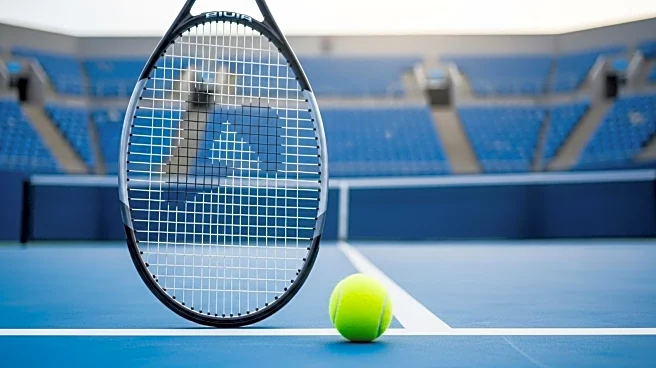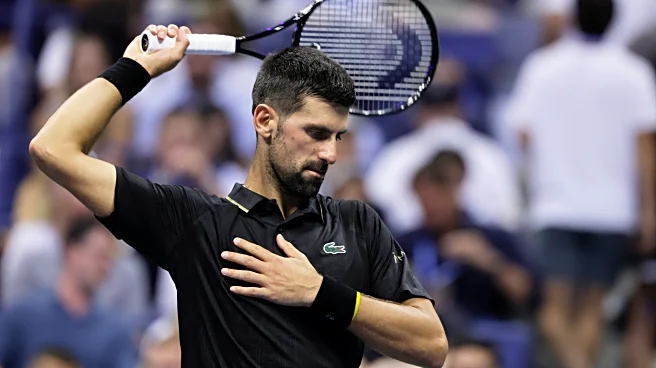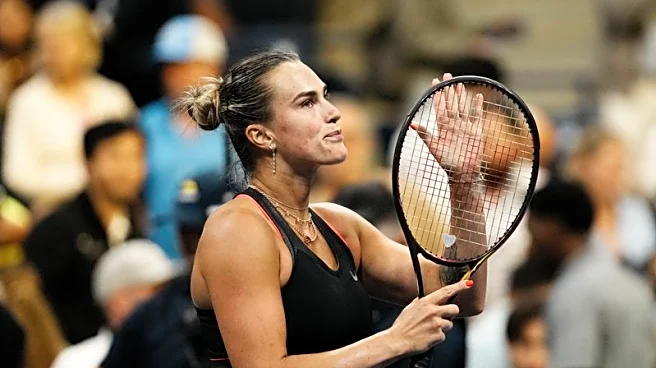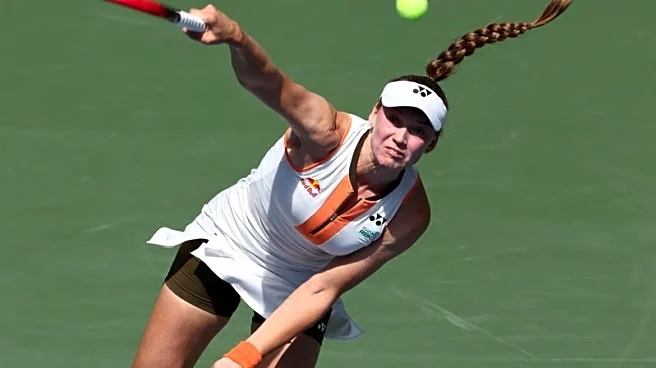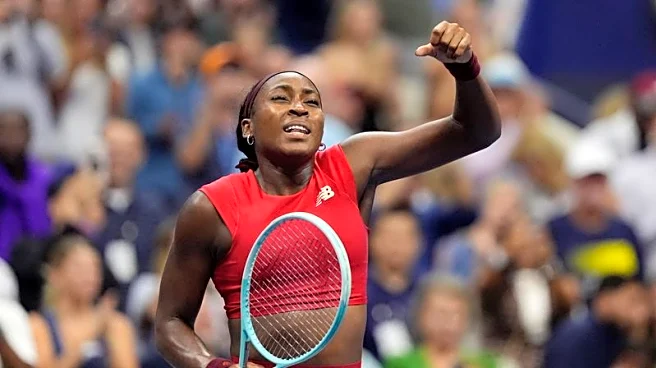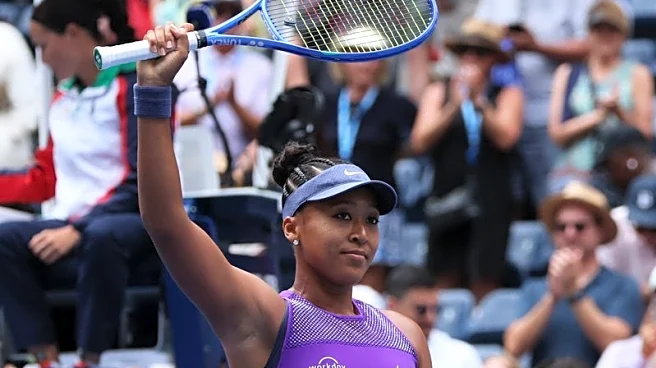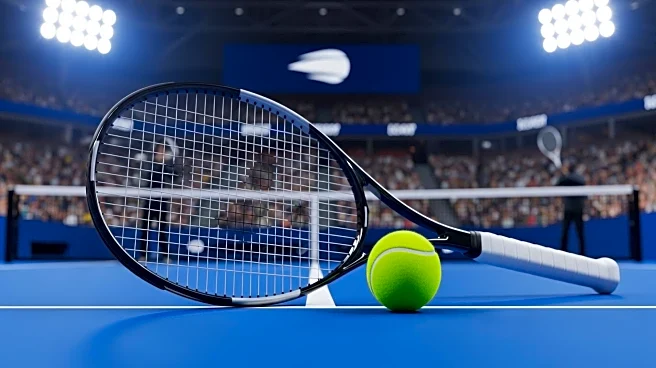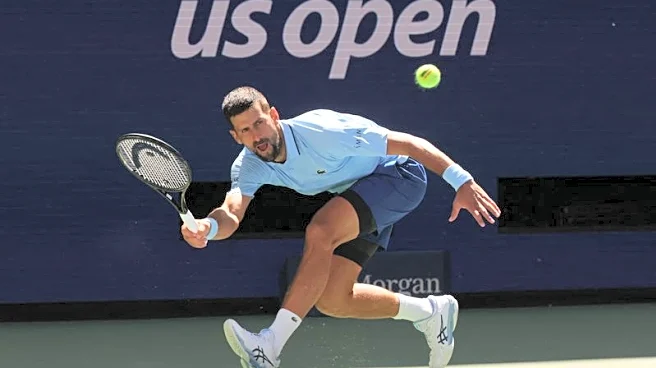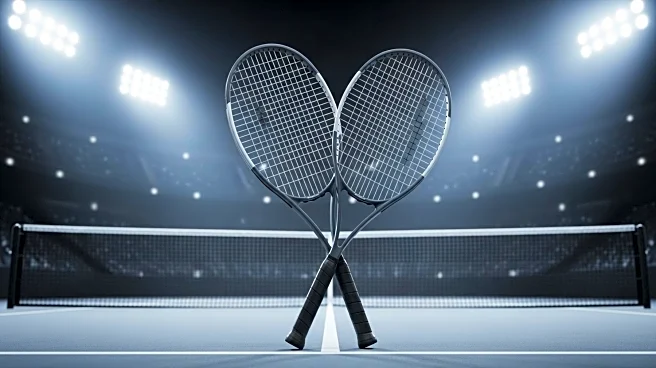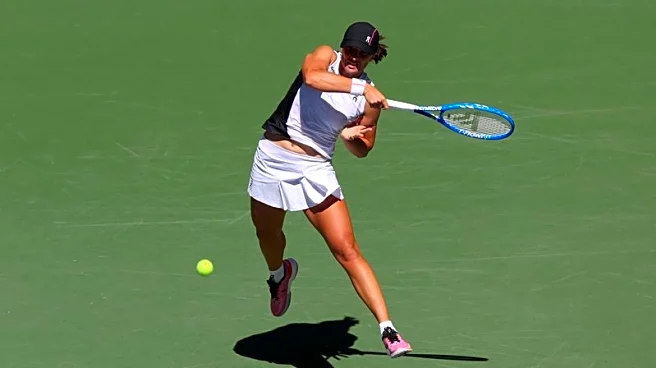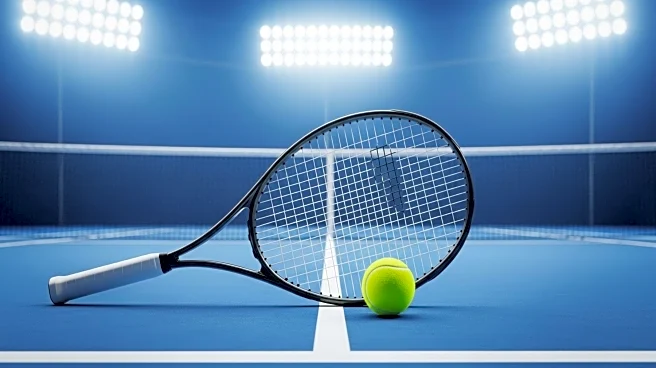What's Happening?
Novak Djokovic, at 38 years old, has become the oldest man to reach the fourth round of the U.S. Open since Jimmy Connors in 1991. Djokovic faced Cam Norrie and overcame a back problem early in the match to secure a victory with scores of 6-4, 6-7 (4), 6-2, 6-3. Despite needing medical attention near the end of the first set, Djokovic managed to recover and continue his strong performance, hitting 18 aces. This marks the 69th time Djokovic has reached the last 16 of a major tournament, tying Roger Federer's record. Djokovic will next face German qualifier Jan-Lennard Struff.
Why It's Important?
Djokovic's ability to overcome physical challenges and continue competing at a high level underscores his resilience and skill as a top athlete. His performance at the U.S. Open is significant as it highlights the longevity of his career and his continued impact on the sport. This achievement not only adds to his legacy but also sets a benchmark for other players in terms of endurance and determination. The match also draws attention to the physical demands of tennis and the importance of athlete health and recovery.
What's Next?
Djokovic is set to face Jan-Lennard Struff in the next round, which will test his ability to maintain his physical condition and performance. The outcome of this match could influence Djokovic's standing in the tournament and his pursuit of further Grand Slam titles. Observers will be keen to see how Djokovic manages his back issue and whether it affects his gameplay in upcoming matches.
Beyond the Headlines
Djokovic's journey through the U.S. Open raises questions about the physical toll of professional tennis and the strategies athletes employ to manage injuries. His experience may prompt discussions on the adequacy of medical support and recovery protocols in sports. Additionally, Djokovic's comments about his team's approach to match play suggest a focus on endurance training, which could influence training methodologies in tennis.
